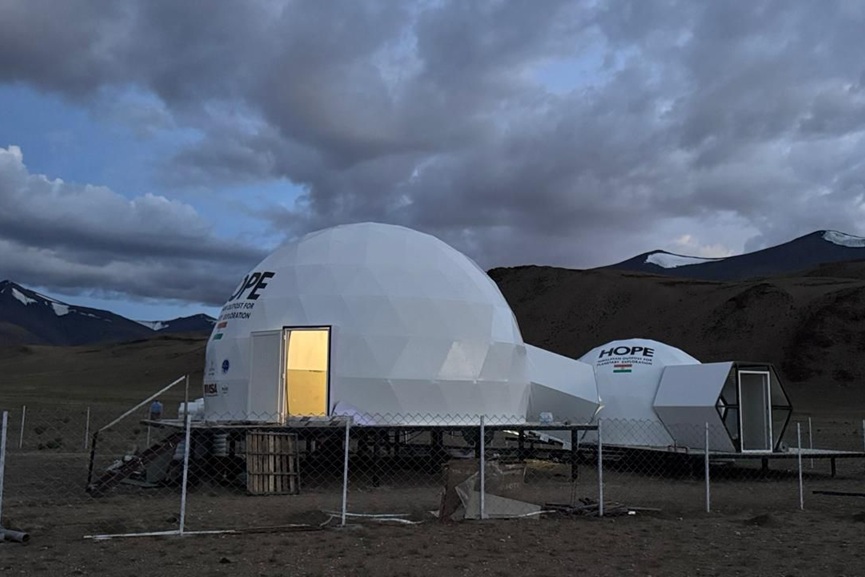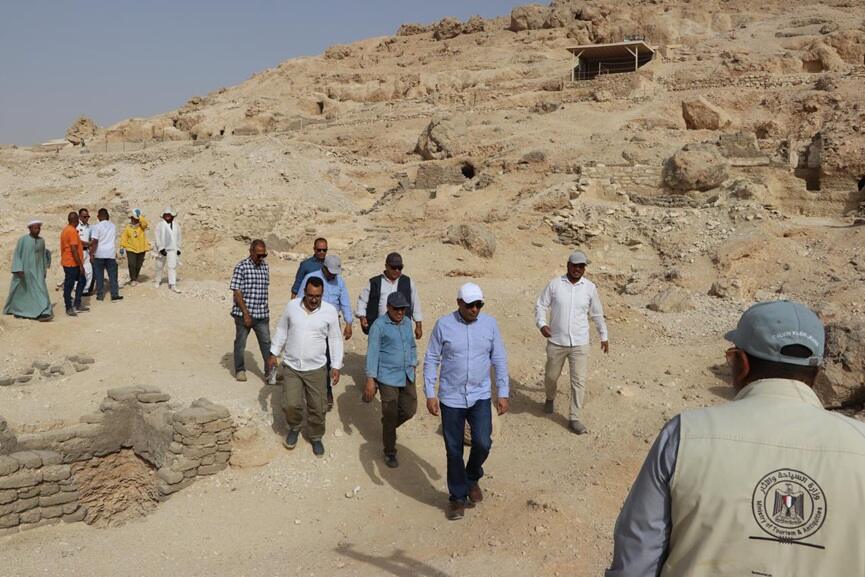New Delhi: The Indian Space Research Organisation (ISRO) has launched the nation’s first analogue space mission at a specially constructed habitat in Ladakh in a major leap forward for India’s ambitions in human space exploration.
The mission, conducted at an elevation of 4,530 meters in the remote and Mars-like environment of Tso Kar, aims to simulate interplanetary conditions and prepare Indian astronauts for future missions to the Moon and beyond.
The mission, titled Human Outer Planetary Exploration (HOPE), was formally inaugurated by ISRO Chairman Dr. V. Narayanan, who called it a rehearsal for the future.
The 10-day analogue mission will run from August 1 to 10, 2025, isolating two crew members, aerospace engineer Rahul Mogalapalli and astrobiologist Yaman Akot, in a simulated space habitat designed to replicate the extreme environmental conditions of Mars.
Dr. V. Narayanan, Chairman, ISRO and Secretary, Department of Space, formally inaugurated ISRO’s high-altitude analog mission HOPE on 31st July 2025.
The mission is scheduled to be conducted from 1st to 10th August 2025 at Tso Kar, Ladakh (elevation: 4,530 metres).
Set in one of… pic.twitter.com/zMYeoBdUkT— ISRO (@isro) August 1, 2025
“This analogue mission is more than a simulation; it is a crucial step in testing India’s readiness for human spaceflight to Low Earth Orbit and eventually to the Moon and Mars,” Dr. Narayanan said at the launch.
Developed by Bengaluru-based space tech company Protoplanet in collaboration with ISRO, the HOPE station consists of a diameter-8-metre habitat module for crew living and a diameter-5-metre utility module for operations and support systems. The modules are interconnected to simulate the seamless workflow required in actual extraterrestrial habitats.
Tso Kar was specifically selected for its close environmental similarities to early Mars, including high ultraviolet flux, low air pressure, extreme cold, and saline permafrost, making it an ideal location to conduct human endurance and systems testing under near-Martian conditions.
“Set in one of Earth’s most Mars-like environments, HOPE is designed to simulate planetary conditions for testing human physiological responses, validating mission protocols, and evaluating spaceflight technologies,” ISRO said in a statement.
🚨 ISRO sets up HOPE station in Ladakh to simulate life on Moon and Mars. pic.twitter.com/ZjQBuaUjLi
— Indian Tech & Infra (@IndianTechGuide) August 3, 2025
Mission Objectives and Scientific Experiments
Over the course of the mission, the analogue crew will conduct a series of experiments curated by leading Indian research institutions, including the Indian Institute of Space Science and Technology (IIST), Rajiv Gandhi Centre for Biotechnology (RGCB), Trivandrum, IIT Hyderabad, IIT Bombay, and the Institute of Aerospace Medicine, Bangalore.
The experiments will focus on a range of biological and operational factors such as:
- Epigenetic and genomic responses to environmental stress
- Physiological and psychological adaptation under isolation
- Validation of health-monitoring protocols
- Planetary surface operations
- Sample collection and microbial analysis techniques
According to ISRO, the data collected will provide critical insights into technology performance, crew workflows, and environmental adaptation, forming the foundation for designing future human space exploration protocols and infrastructure.
The analogue mission aligns with India’s long-term human spaceflight roadmap. ISRO plans to send its first astronauts into Low Earth Orbit by 2027, with more ambitious goals of landing Indian astronauts on the Moon by 2040.

























